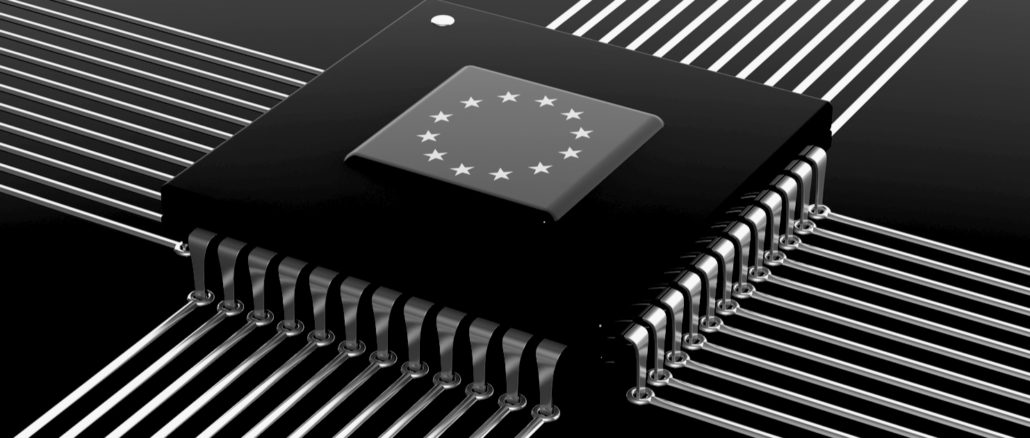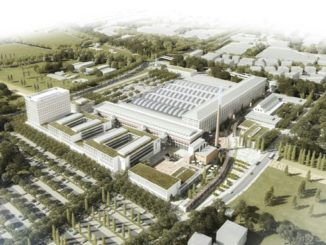
This week at the High Performance and Embedded Architecture and Compilation (HiPEAC) Vision conference in Valencia Spain, researchers and industry stakeholders are gathering to talk about the future of computing and how Europe can ride some of the emerging trends.
One of our editors is on hand gathering impressions from the HPC side of the house in particular while we take a broader look at the vision HiPEAC has laid out for Europe from a larger ICT roadmap point of view.
Even though HiPEAC tends to focus on the upper echelons of computing, the European Commission-funded project ends up encompassing everything from supercomputers to edge devices. In fact, the one of the overarching themes of the Vision conference is that ICT silos are breaking down, with different areas of computing beginning to merge into one other. This continuum is perhaps most apparent in the melding of cloud datacenters and the edge devices like virtual assistants, smartphones and medical wearables that feed into them.
One common thread across this continuum is the need for extreme energy efficiency, which is mandated by the size of hyperscale datacenters on the server side and the lack of an electric plug on the edge device side. The scale of these datacenters and ubiquity of these edge devices is also driving component design, especially processors. The economics of companies like Google, Facebook, Amazon and Baidu is pushing these organizations to develop their own specialized server chips to minimize up-front costs and maximize runtime price-performance; the same is happening for consumer devices although not yet for emerging applications like autonomous vehicles.
But the increasing profile of these edge devices is certainly attracting a lot more research and investment in them. Considering how much computing will end up in automobiles and other transportation platforms over the next several years, it’s not surprising this is fast becoming an important area of interest for the manufacturing-saavy Europeans. And as more of the economic value in cars, planes and trains moves to these edge applications, the European manufacturing industry is well-positioned to take advantage of this shift.
Another key focus at the conference is the declining fortunes of Moore’s Law and what the industry is doing to adapt to it. According to HiPEAC Vision editor-in-chief and CEA Research Fellow Marc Duranton, the industry has become resigned to the fact that component shrinking is coming to an end, along with the attendant performance gains enabled by it. Although there are plenty of post-Moore’s Law options being bandied about, the HiPEAC Vision event will concentrate on the value of accelerators.
“Acceleration for specific applications is the short-term route to performance gains, while we investigate new paradigms such as neuromorphic and quantum computing – which will however complement, rather than replace, silicon semiconductor technology,” explained Duranton.
While some of those accelerators will be the more typical GPUs and FPGAs that are in current use today, there is also a new breed of application-specific accelerators, or in some cases, standalone processors, aimed at AI/machine learning, as well as the aforementioned neuromorphic and quantum computing. Optical computing is another technology being consider, and this one has the potential to cut across multiple application areas. These application-specific chips are contributing mightily to the industry’s general move toward heterogenous architectures.
Not surprisingly, the application area getting the greatest attention at the conference is artificial intelligence. Its penetration into cloud-based services is already well underway and in areas like HPC and enterprise computing, its impact is expected to be equally profound. There’s also a feedback loop anticipated for the development of these technologies in which AI can be used to optimize hardware and software designs and automate production. On the software side that means things like automated machine learning, which simplifies the programmer’s task. On the other hand, automating hardware design is still very much in the early concept stage, notwithstanding what electronic design automation (EDA) has done for the industry.
Traditional HPC is another big topic at this week’s event. There are no less than three session at the Vision event addressing the coming exascale era of computing, and in one session the post-exascale era and what that all entails for the Europe. In general, Europe is a couple of years behind the US, China, and Japan in this area, but intends to use the exascale race as an opportunity to develop the next generation of HPC processors within the EU, which is taking place under the European Processor Initiative (EPI). The resulting processor designs, based on Arm and RISC-V, are also intended to be used in the wider datacenter market, as well as in the autonomous vehicle industry.
And since this is Europe and not China, one important aspect for the HiPEAC crowd is the inclusion of ethical considerations regarding the privacy and rights of people who will end up using the technology. And for platforms such as smart cars, trains, and robotic surgeons, there are safety criteria to be met as well, both in basic functionality and from a hackers-prevention point of view.
If you want to delve deeper into the themes of HiPEAC Vision 2019, a 175-page document describing the technology roadmap in a lot greater detail is available for downloading at https://www.hipeac.net/vision/2019/




Be the first to comment